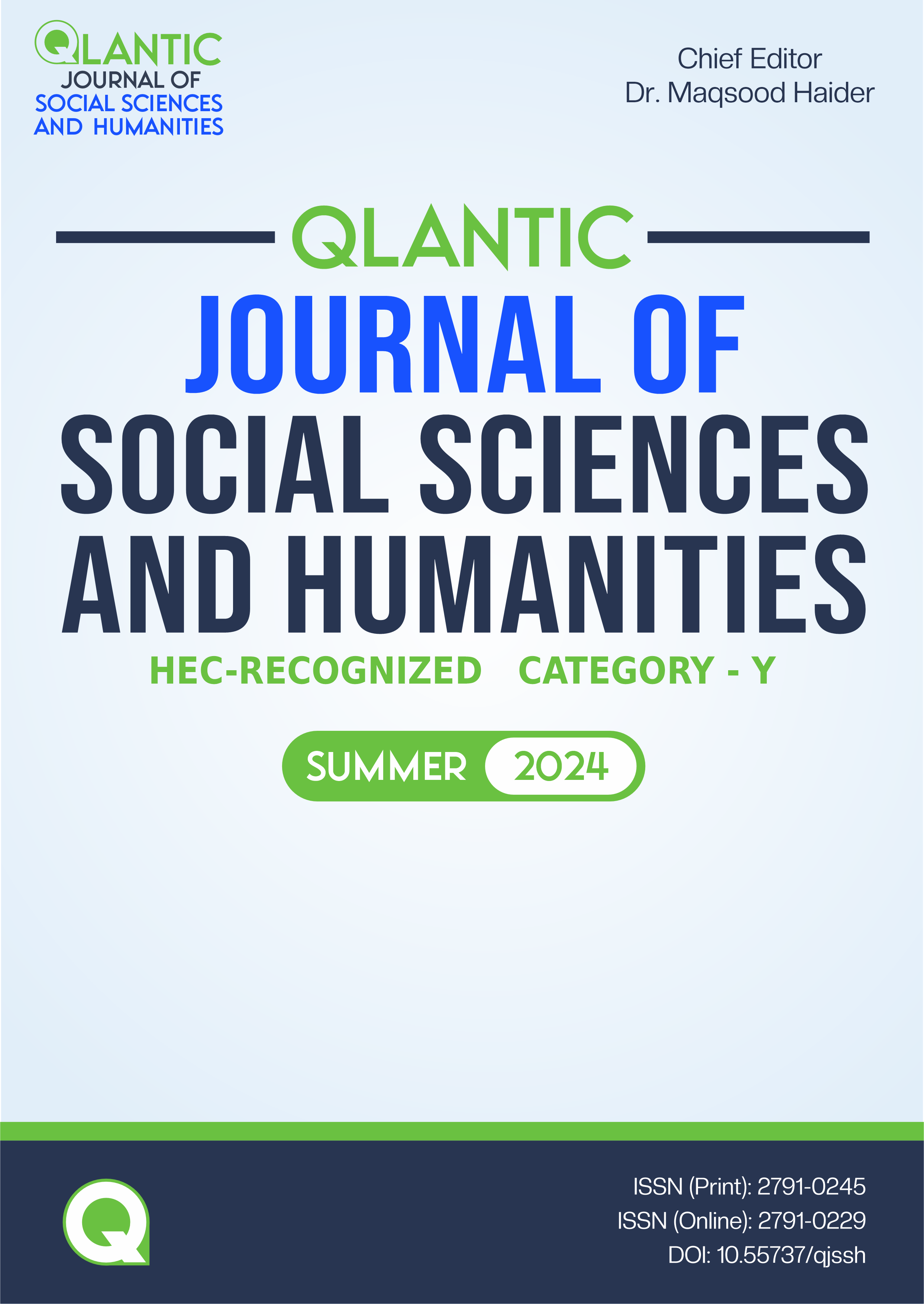Invisible Wounds: Analyzing Women's Trauma in Shobha Rao's Girls Burn Brighter
DOI:
https://doi.org/10.55737/qjssh.338791500Keywords:
Women’s Trauma, Feminist Perspective, Societal Norms, Systemic Bias, Insidious Trauma, Secret Trauma, Gender DifferencesAbstract
The current research paper analyses Shobha Rao’s Girls Burn Brighter. It examines the novel's portrayal of female trauma, which is frequently misinterpreted and not acknowledged due to systemic bias and societal norms. The researcher uses a feminist perspective, with a focus on understanding how societal norms and views shape the nature of trauma. It examines the societal structures that promote gender-specific trauma and contribute to the lack of comprehension and acceptance of female suffering. The paper explores "insidious trauma", delves into gender differences, and discusses "secret trauma” to highlight the inadequate representation of women's trauma due to the prevailing class often portraying themselves as victims at the expense of marginalized groups. The findings of the research emphasize the importance of viewing traumatic events beyond extreme occurrences and recognizing the impact of familiar and seemingly normal experiences. It aims to enhance the understanding of women's trauma, prompting the necessity to reconsider the established parameters of defining trauma.
References
Agarwal, B. (2020). Shobha Rao’s Girls Burn Brighter: A Psycho Analysis of Women’s Inner World. The Indian Journal of English Studies, 57(1), 277-286.
American Psychiatric Association. (1994). Diagnostic and Statistical Manual of Mental Disorders, (4th ed.).
American Psychiatric Association. (2013). Diagnostic and Statistical Manual of Mental Disorders, (5th ed.). https://doi.org/10.1176/appi.books.9780890425596
Arora, P. (2022). Marital Rape: A Dichotomy of Consensual and Compelled Sex. International Journal of Creative Research Thought, 10(8), 255-265. https://ijcrt.org/papers/IJCRT2208392.pdf
Asif, M., Zafar, N., & Iftikhar, T. (2021). Reconceptualization of Gender Relations in Saeed’s Amal Unbound and Rao’s Girls Burn Brighter. Sjesr, 4(2), 131–138. https://doi.org/10.36902/sjesr-vol4-iss2-2021(131-138)
Balaev, M. (2018). Trauma Studies. In D. H. Richter (Ist ed.), A Companion to Literary Theory (pp. 360-371) John Wiley & Sons Ltd.
Brown, L. S. (1989). Not Outside the Range: One Feminist Perspective on Psychic Trauma. In C. Caruth, Trauma: Exploration in Memory, (pp. 100-112). The John Hopkins University Press.
Caruth, C. (1995). Trauma: Exploration in Memory. The John Hopkins University Press.
Fernandes, G., Fernandes, M., Vaidya, N., De Souza, P., Plotnikova, E., Geddes, R., Holla, B., Sharma, E., Benegal, V., & Choudhry, V. (2021). Prevalence of child maltreatment in India and its association with gender, urbanisation and policy: a rapid review and meta-analysis protocol. BMJ Open, 11(8), e044983. https://doi.org/10.1136/bmjopen-2020-044983
Heyward, I. C. (1989). Touching Our Strength: The Erotic as Power and the Love of God. Harper & Row.
Kessler, R. C., Sonnega, A., Bromet, E., Hughes, M., & Nelson, C. B. (1995). Posttraumatic Stress Disorder in the National Comorbidity Survey. Archives of General Psychiatry, 52(12), 1048–1060. https://doi.org/10.1001/archpsyc.1995.03950240066012
Martin, E. K., Taft, C. T., & Resick, P. A. (2007). A review of marital rape. Aggression and Violent Behavior, 12(3), 329–347. https://doi.org/10.1016/j.avb.2006.10.003
Qamar, S., Khan, M. A., & Shaheen, A. (2022). Agentic Female Fraternity of the Recovering Patriarchal Women in Shobha Rao’s Girls Burn Brighter. PalArch’s Journal of Archaeology of Egypt / Egyptology, 19(4), 1306-1318. https://archives.palarch.nl/index.php/jae/article/view/11627
Rao, S. (2018). Girls Burn Brighter. Flatiron Books.
Rizky, W. A. (2023). Oppression towards main female characters in Rao’s Girls Burn Brighter [Doctoral dissertation], Universitas Islam Negeri Maulana Malik Ibrahim. http://etheses.uin-malang.ac.id/54764/1/19320128.pdf
Root, M.P. P. (1992) Reconstructing the Impact of Trauma on Personality. In L. Brown and M. Ballou (Eds.), _Personality and Psychopathology: Feminist Reappraisals_. The Guilford Press.
Russell, D. E. H. (1986). The Secret Trauma: Incest in the lives of girls and women. Basic Books Publishers.
Segalo, P. (2015). Trauma and Gender. Social and Personality Psychology Compass, 9(9), 447–454. https://doi.org/10.1111/spc3.12192
Sütterlin. N. A. (2020). History of Trauma Theory. In C. Davis & H. Meretoja (1st ed.), The Routledge Companion to Literature and Trauma (pp. 11-22). Routledge.
Tolin, D. F., & Foa, E. B. (2006). Sex differences in trauma and posttraumatic stress disorder: A quantitative review of 25 years of research. Psychological Bulletin, 132(6), 959–992. https://doi.org/10.1037/0033-2909.132.6.959
Published
Issue
Section
License
Copyright (c) -1 Asma Rahim, Dr. Abdul Hamid Khan

This work is licensed under a Creative Commons Attribution-NonCommercial 4.0 International License.





